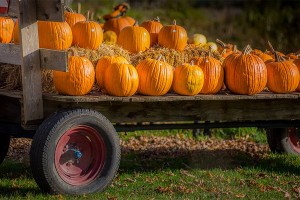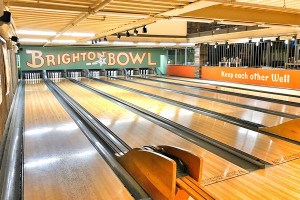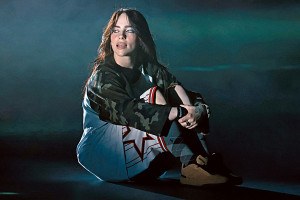Le Laboratoire Cambridge Explores “The Trouble with Jellyfish”

The Catostylus mosaicus is prevalent along the coastlines of southeastern Australia / Photo by Lisa-ann Gershwin
For nearly a decade, Parisian-based think tank Le Laboratoire, founded by biomedical engineer and Harvard University professor David Edwards, has been an incubator for experiments, some of which include transmitting smells across the world and turning flavored liquids into vapor.
Now, a new exhibition at Le Laboratoire’s outpost in Kendall Square is tackling the issue of ocean biodiversity by putting visitors through an immersive experience that allows them to experience low-oxygen levels in a hypoxia-simulation chamber and taste jellyfish-infused cupcakes, among other things.
Titled “The Trouble with Jellyfish,” the exhibition is a collaborative effort by contemporary artist Mark Dion, marine biologist Lisa-ann Gershwin, and a group of students from Edwards’ popular “How to Create Things & Have Them Matter” class at Harvard, who all converged in Paris for a workshop last summer.
“We all went down to the Mediterranean Sea and dove amongst the jellyfish,” said Edwards in a phone conversation earlier this month. “It was a really interesting few days where we all got to know each other.”
In the time leading up to the trip, the students had been exploring issues of ocean biodiversity in Edwards’ “dream-based class,” as he calls it, which tackles a different theme every year. Dion, who’s known for fusing art and science in his works and has discussed a collaboration with Edwards since they met years ago, consulted with the students throughout the semester.
Edwards’ choice to explore the topic of ocean biodiversity—specifically jellyfish—was largely inspired by a book by Gershwin, Stung!: On Jellyfish Blooms and the Future of the Ocean.
In the exhibit at Le Laboratoire Cambridge, the three elements—Dion’s art, Gershwin’s research, and the students’ ideas—all come together.
Upon entering the exhibit, visitors will first find themselves in a 19th-century-style salon created by Dion, outfitted with jellyfish wallpaper and artifacts from the Harvard Museum of Natural History.
“It’s a cultural immersion into the world of jellyfish,” said Edwards.
Around the corner from the salon, visitors will get to see a tank full of live jellyfish—Aurelia aurita, moon jellies—brought over across town from the New England Aquarium. Next, a mock-classroom section will feature videos of Gershwin explaining problems such as climate change and overfishing, which lead to the proliferation of jellyfish in the ocean.
“It’s kind of a darker moment,” said Edwards.
The hypoxia-simulation chamber comes next, meant to imitate the experience of being in the ocean’s dead zone, where jellyfish can survive and proliferate, without any risk.
“It’s an interesting point in the exhibition where you’re invited to go where, in principle, none of us can go,” said Edwards. “And yet there’s also sort of a reflection about what is happening to nature and our role in that.”
From there, the exhibition takes on a more hopeful tone, proposing solutions to the previously presented problems, developed by Edwards’ students and presented visually by Dion, some in the form of Saturday Night Live-style commercials set decades into the future.
“They’re bringing you to a world where we’re actually managing to make the best out of the jellyfish,” said Edwards. “It’s a lot of fun and is also provocative.”
The students have also created the jellyfish-derived ingredient that Renae Connolly, pastry chef at Le Laboratoire’s Café ArtScience, is using to bake jellyfish-infused cupcakes. They’ll be offered at select events during the exhibition’s run.
One event, the “Jelly Take-Over!” on September 26, is aimed specifically at middle-school-age visitors, inviting them to go behind the scenes of the exhibition and create their own solutions to the problems explored in it.
“I would hope that our public will be intrigued, fascinated, and curious about the story of our ocean biodiversity, and the role that jellyfish are playing, and our role in both contributing to the ocean biodiversity challenge and our potential role in helping to resolve it,” said Edwards. “It’s an absolutely an exhibition which is pointing in a more hopeful direction.”
“The Trouble with Jellyfish” is on view at Le Laboratoire Cambridge, 650 East Kendall St., Cambridge, through January 2, 2016. For more information, visit lelaboratoirecambridge.com.


